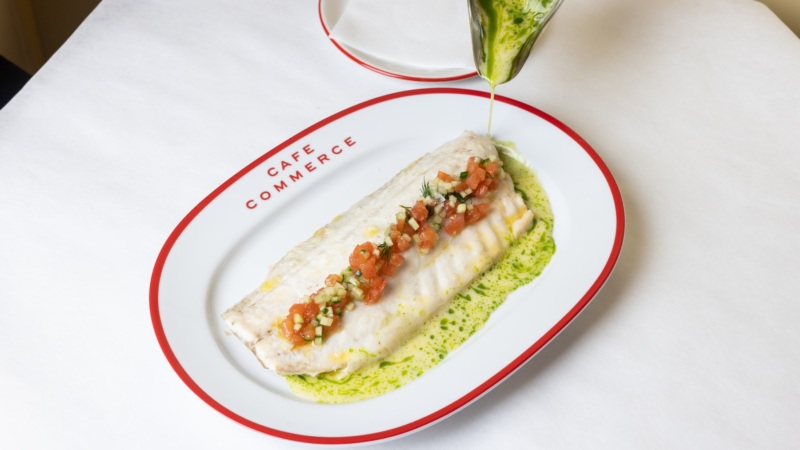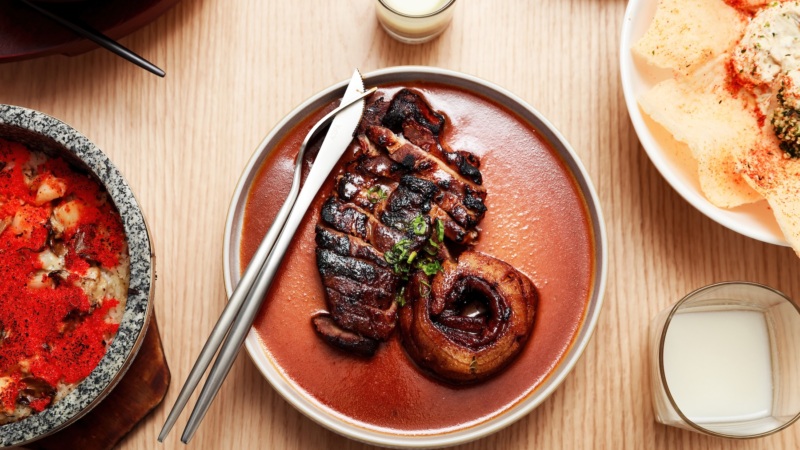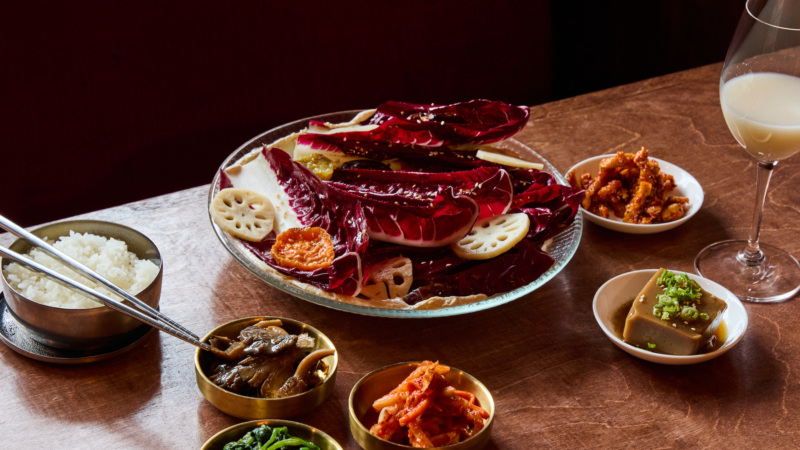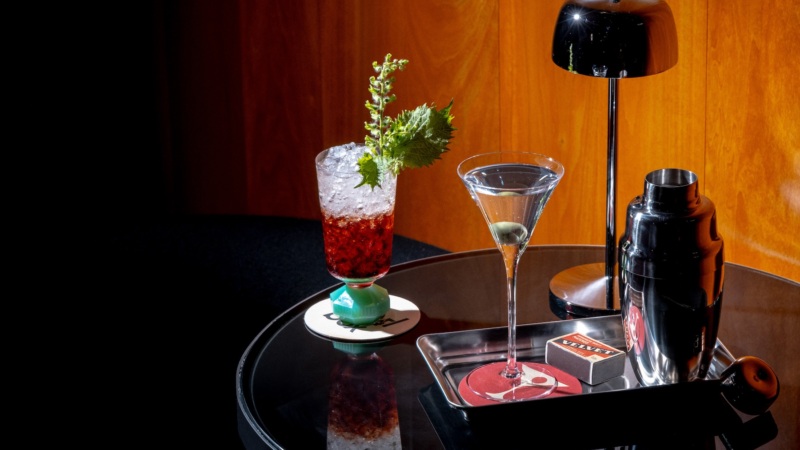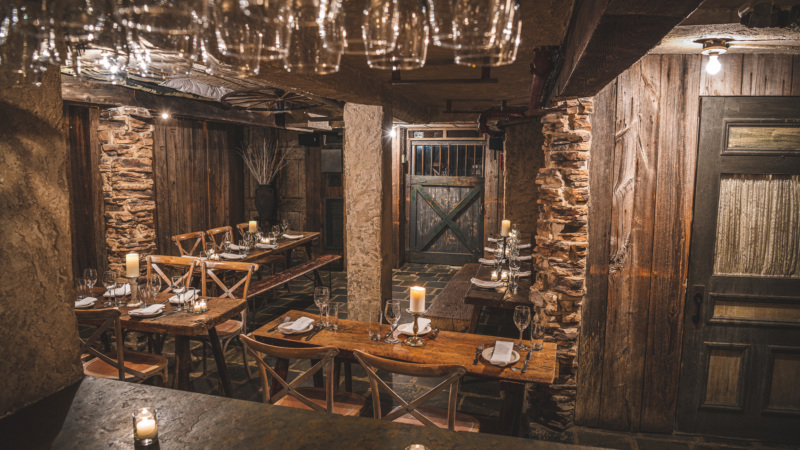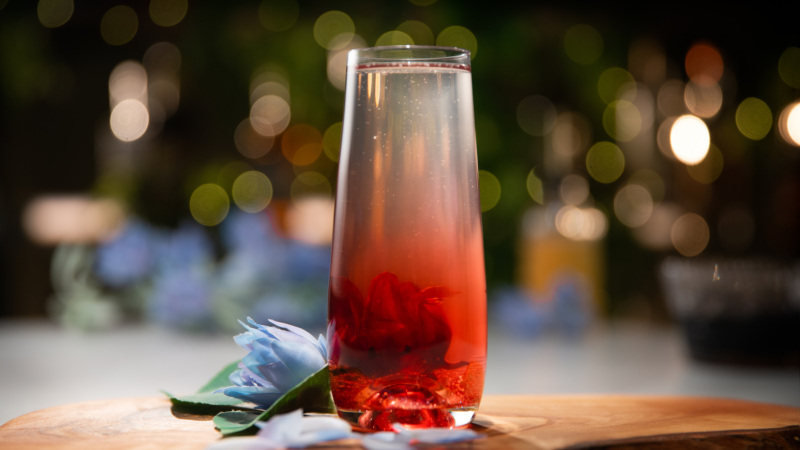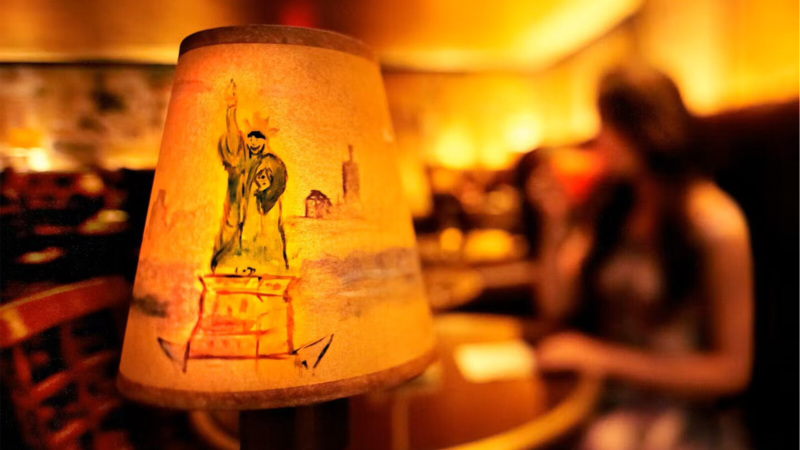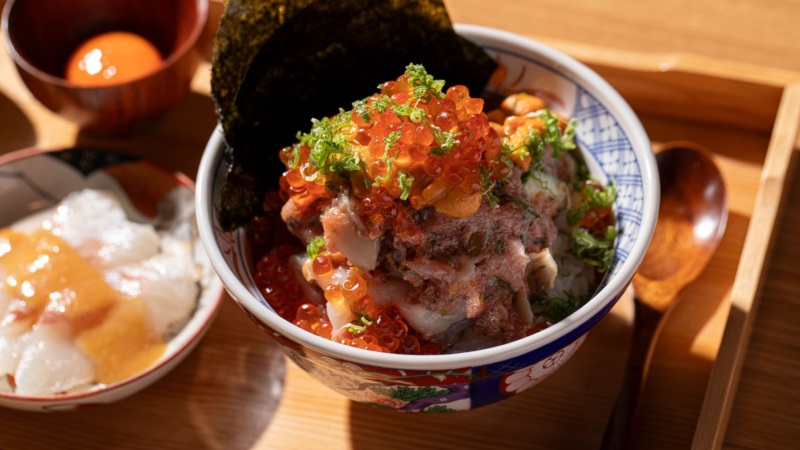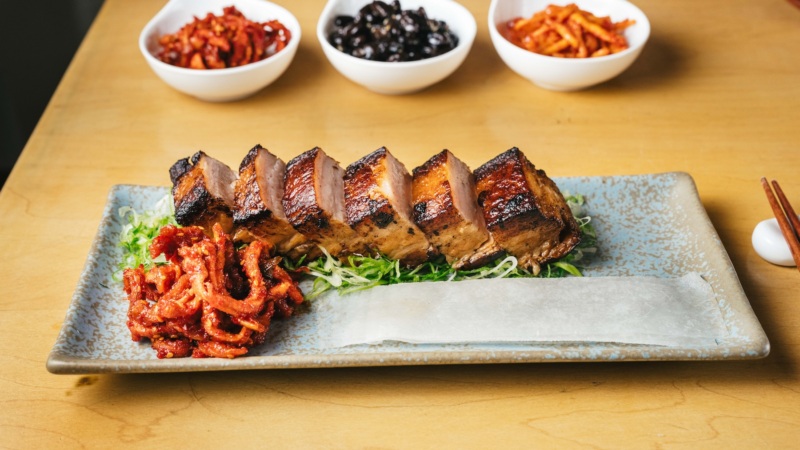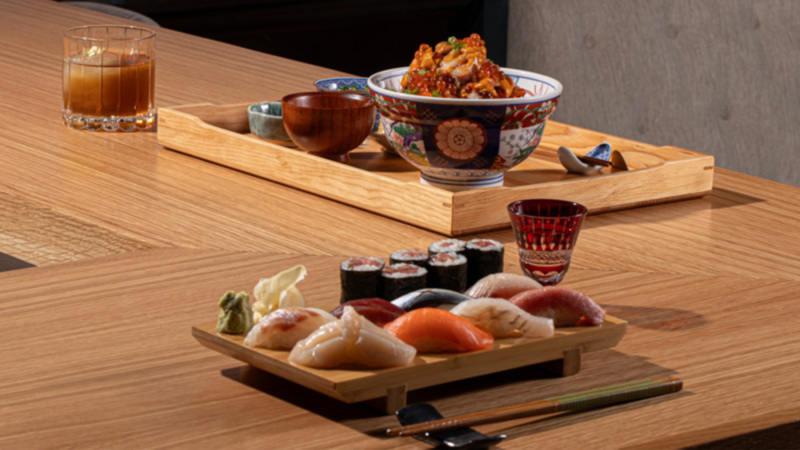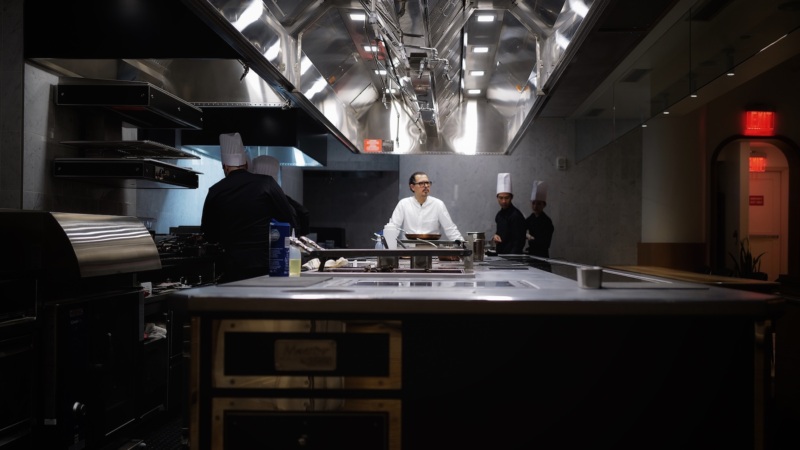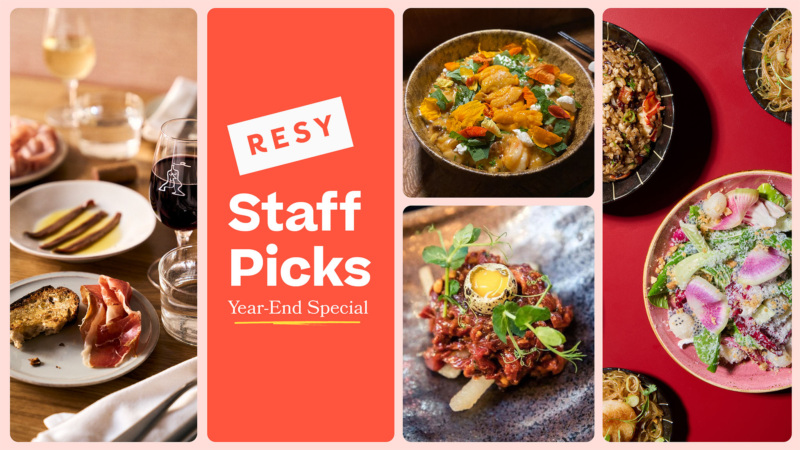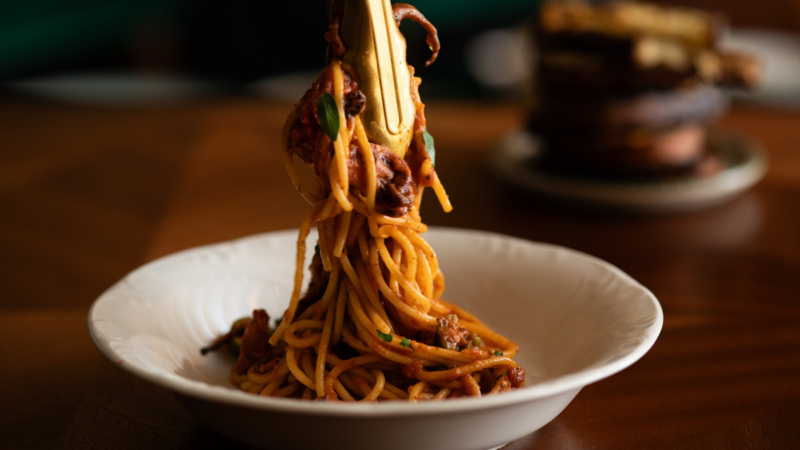
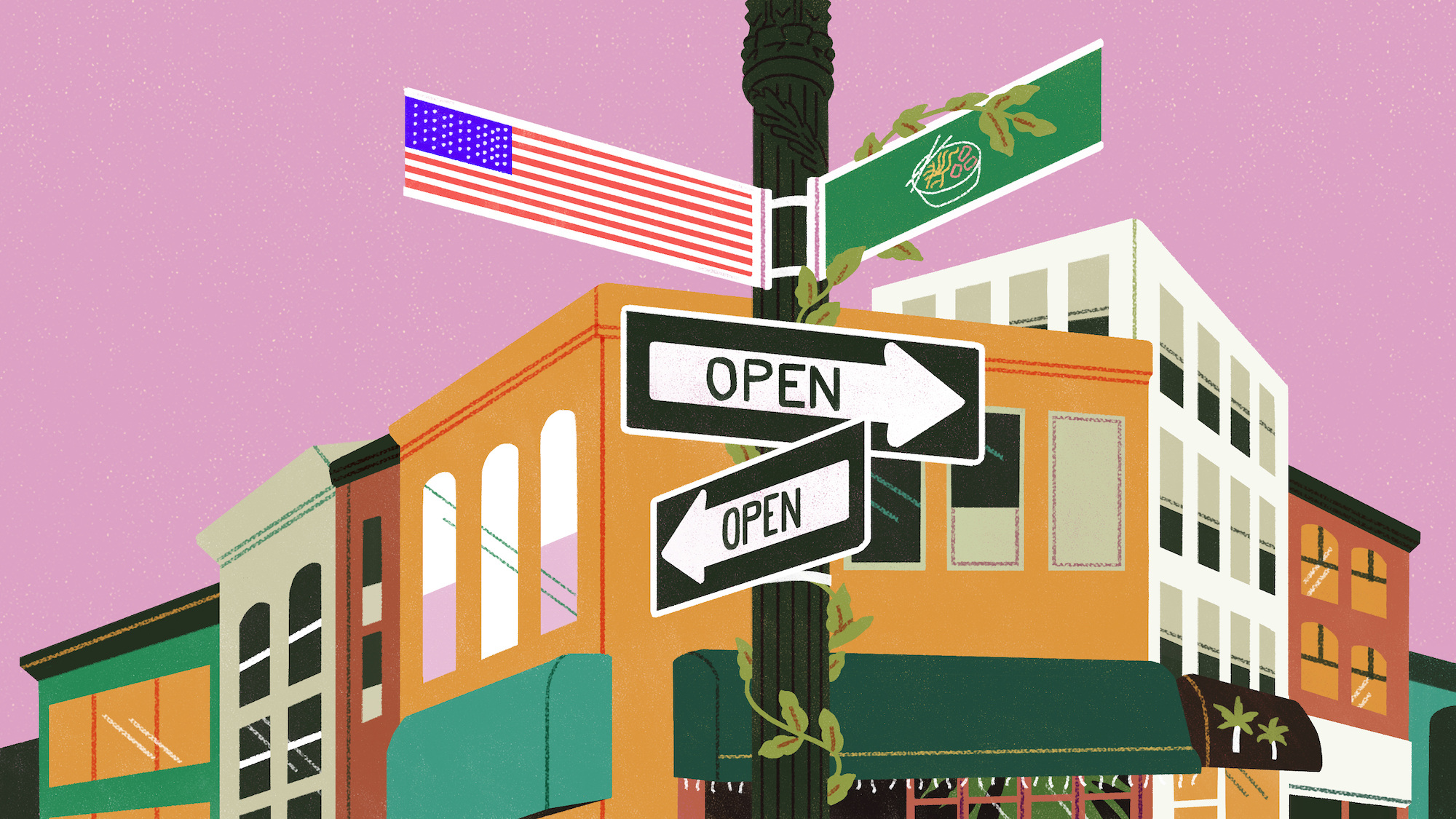
Today New York Has Some of the Best Vietnamese Food in America. Here’s Why.
“It’s just a grilled chicken over rice,” chef Dennis Ngo explains, as he puts the final touches on a new dish at Di An Di.
Actually, it’s much more than that. It’s an amalgamation of influences that have shaped Ngo over the years. The initial inspiration came from a beloved version of com gà from his parents’ hometown, Nha Trang: poached, shredded chicken and handfuls of rau ram sitting atop turmeric rice, laced with aioli. It was something he loved eating whenever he visited Vietnam.
But Ngo’s version adds his experiences from his hometown, Houston, and from New York, the city where, 13 years ago, he decided to leave the world of information systems to become a chef.
There’s a thick Texas barbecue-style glaze that coats the charred, grilled chicken, infused with fish sauce — thank you, Houston — a housemade chile sauce, and molasses. Ngo’s version of aioli, made with shallots, crème fraîche, and pickling juice, is a love letter to the white sauce that accompanies halal chicken and rice — something he grew fond of after moving to New York.

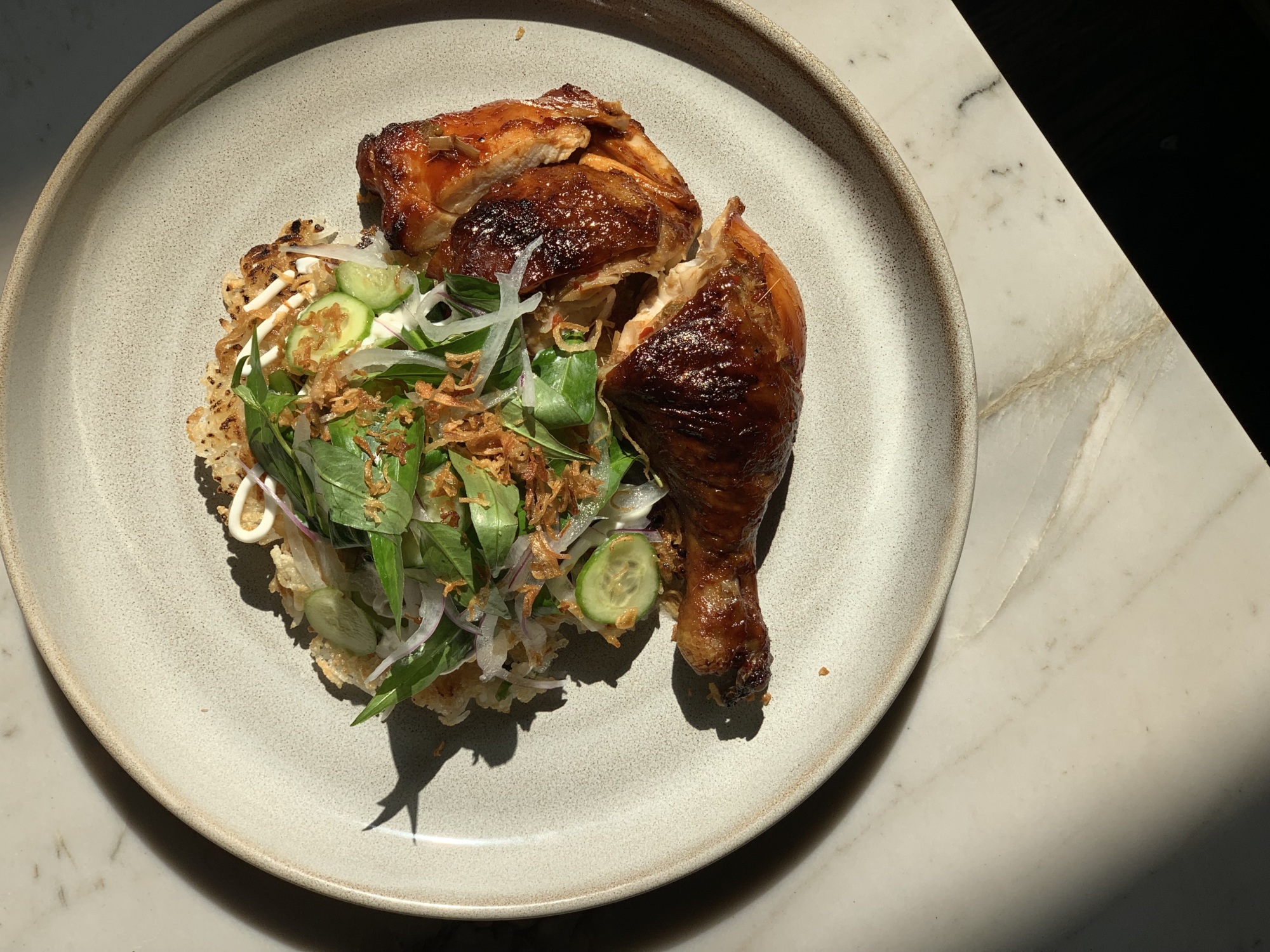

Ngo, and other chefs like Saigon Social’s Helen Nguyen, Falansai’s Eric Tran, Bolero’s Matt Le-Khac, and Ha’s Dac Biet’s Anthony Ha and Sadie Mae Burns, among others, are defining a new canon for Vietnamese American cuisine here in New York City. They are drawing not only from the cooking of the Vietnamese diaspora, but feathering in their own personal experiences, often growing up as second-generation Americans across the country.
This is a different tale than the growth of Vietnamese cooking across America which, to be sure, reflects that diaspora experience. Because, to some extent, New York was never a major part of that, given its modest Vietnamese émigré population. While other parts of the country like Houston, Seattle, or San Jose and Westminster in California became vibrant Vietnamese American enclaves with a robust mix of Vietnamese restaurants, bakeries, and businesses, New York never quite did. And it’s been a noticeable absence, reflected in the smaller, more homogenous cohort of Vietnamese restaurants we’ve had here for decades.
Now, however, New York is home to a new and different Vietnamese American culture, one that transcends the first-generation immigrant experience. Over the past five years, the city has become an epicenter for modern Vietnamese American cuisine, with chefs setting out to demonstrate to New Yorkers that Vietnamese cooking is much more than pho or bánh mì. Through their cooking, they’re building a Vietnamese American community that’s unique to New York, and pushing forward a culture and shared history, even as they continue to write it.
▪️
The first wave of Vietnamese immigrants who came to the U.S. beginning in 1975 tended to settle in metropolitan areas like San Jose and Westminster, Calif.; Houston; Seattle; and Eden Center, Va., where they formed enclaves. Where they did not settle in large numbers was New York City.
By 1980, according to data compiled by the Asian American Federation’s Census Information Center, there were approximately 1,800 people with Vietnamese ancestry in New York City, in a city with a population of more than 7 million. By the end of the 1980s, that number grew to around 8,400. By the ’90s, the Vietnamese population grew 55% to 13,000. In the 2000s, the population rose to as much as 16,400. Census data from 2020 hasn’t been compiled just yet, but the New York Metropolitan area still has the smallest population of Vietnamese Americans among the major metro areas of Houston, Seattle, Los Angeles, San Jose, and Washington, D.C.
“New York was too hard and too expensive; people wanted to move to places where they had relatives or people they knew already there,” says Yen Ngo, owner of Van Da in the East Village. Ngo herself was born and raised in Dà Lat, Vietnam, but moved to Washington, D.C. with her family in 1981 where she attended high school. In 2001, she settled in New York City, and in 2019, she opened her restaurant, Van Da.


Thus New York never had a centralized Vietnamese neighborhood within the five boroughs — likely because there just wasn’t a large enough community. There is no official Little Saigon; perhaps the closest thing to it is Baxter Street in Chinatown, where a cluster of old-school Vietnamese restaurants remains.
Interestingly enough, however, the self-proclaimed first Vietnamese restaurant in America, called Viet Nam, was located on Lexington Avenue and 122nd Street. As per Craig Claiborne’s odd 1961 New York Times review, some familiar dishes make an appearance, like cha giò (fried spring rolls), but strangely enough, Claiborne finds that Viet Nam’s menu “could not be classified as exotic.” He finds the seasoning “mild,” lauds the “admirable variety in the menu,” and then goes onto describe their “most fascinating” dish of Four-Style Beef.
Interestingly, while there’s no mention of pho or bánh mì in the review, those two dishes dominated the menus at most of New York’s Vietnamese restaurants by the late 1970s, and through the early aughts. So did broken rice. These restaurants were minimal on frills, and largely were clustered within or near Chinatowns. And most often, they were owned and operated by Hoa, an ethnic minority of Chinese Vietnamese people.
Those earliest immigrants who settled in New York and opened restaurants, Yen Ngo says, “created menus that were more Chinese and had hundreds of dishes.” Chinese cooking influences — sweeter flavors in pho broth, and less reliance on using fish sauce — are hallmarks of Hoa-owned Vietnamese restaurants. And the formula they developed has worked for the past 40 years.
Many of these older Vietnamese restaurants, like Thái Son, Bo Ky, Nha Trang One, or Pasteur Grill and Noodles, are still here, and still delighting diners — including longtime New York restaurant critic Robert Sietsema, who recalled eating his very first bowl of steaming pho somewhere along Baxter Street in 1978.
“These places had a predictable menu that’s so different from the Vietnamese restaurants that are appearing now,” Sietsema recalls. Like their Chinatown counterparts who specialized in Chinese American cuisine, these restaurants developed menus that made the best of what was available, and they appealed to “outsiders who were not Vietnamese or Chinese Vietnamese.”
These restaurants stuck to classic comfort foods and delivered the kind of Vietnamese dining experience that New Yorkers have come to love and expect: at least two dozen varieties of pho, a “giant constellation” of bottles and condiments like cilantro, hoisin, sriracha, and house-pickled peppers on every table, and decorative accents like beaded kitchen curtains, waterfalls, Buddha statues, and landscape paintings.
However, for Vietnamese Americans like Yen Ngo or Tuan Bui, co-owner of Di An Di, these restaurants were good (and they’re still good), but simply didn’t have the Vietnamese food they craved from home: harder-to-find noodle soups like bún riêu or bún bò Hue, or delicate and labor-intensive glutinous rice dumplings known as bánh it ram.
Bui, who moved to New York in 1999 from Northern Virginia, says he could recall only one restaurant from the early aughts that reminded him of the Vietnamese food he grew up eating: a hole-in-the-wall in an alley off Canal Street, sandwiched between a barber shop and a luggage store. It’s no longer there, but it was his favorite, along with Bánh Mì Saigon, which still is selling its venerable pâté-laced sandwiches from the back of a Chinatown jewelry store.
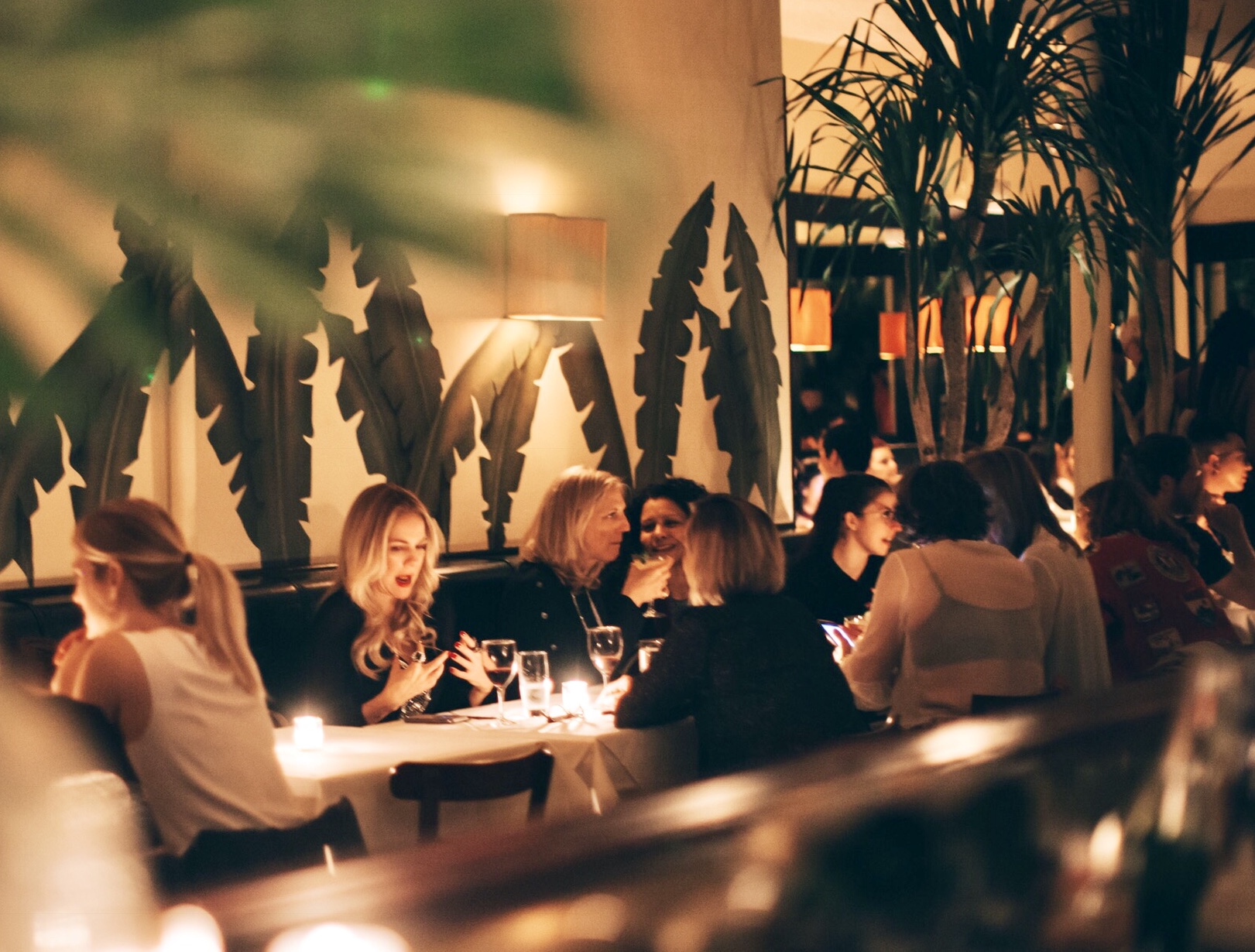
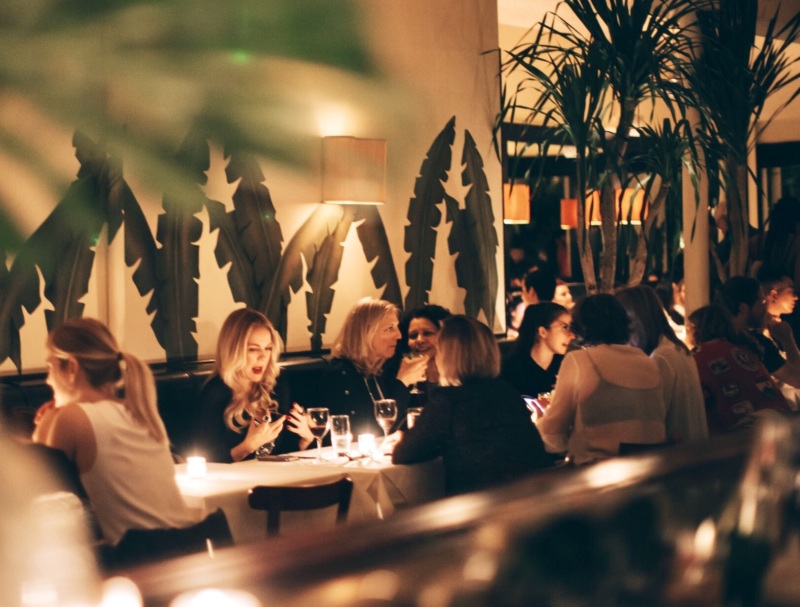
At the same time, in the late ’90s and early 2000s, Vietnamese cooking could be found in clubby and opulent spaces, like Indochine — which opened in 1984, attracting the likes of Madonna, Andy Warhol, and David Bowie, and is still in operation today. Or Midtown’s Le Colonial, which opened in 1993 and closed in 2019, and focused on French Vietnamese fare. Both of these establishments, to an extent, and especially Le Colonial, romanticized the French colonization of Vietnam.
In 1999, Bui worked as a host at Keith McNally’s original Pastis, and the experience opened his eyes to the possibilities of what a restaurant could be. “It was almost like a Studio 54 for restaurants, for the clientèle,” he recalls. “I realized there was this whole other level to the restaurant experience, beyond just the food, that was about the ambience, décor, service, lighting, and music.”
Ten years later, in 2009, he and his brother, Huy, decided to open An Choi, a Vietnamese street-food-inspired restaurant on the Lower East Side that many have credited as a pioneer in developing the robust culture of Vietnamese American cuisine we have in New York today.
“You could either be like an Indochine, or you can be like a Pho Bang,” Bui says, “so I thought, why can’t we do something in the middle where it can still be true to, or authentic for Vietnamese, and create a level of ambience and experience those diners never have had with Vietnamese food?”
An Choi’s space was designed to make diners feel as though they’d been transported to the streets of Vietnam. The menu was meant to serve as an introduction to Vietnamese cuisine for non-Vietnamese New Yorkers and, for homesick Vietnamese Americans from elsewhere, it was meant to remind them of home.
When An Choi first opened, Sietsema called it “Vietnamese for Beginners,” but by the time it closed in 2020 as a victim of the pandemic, it was being remembered as “groundbreaking.”
▪️
It might be hard to imagine nowadays, but it was only a little more than a decade ago that restaurant critics were still explaining how to pronounce pho in their reviews. Not long after An Choi opened, both the New York Times and New York magazine published features on a sandwich, bánh mì, that at the time was still relatively new to many New Yorkers — although not to diners in Houston, Seattle, San Jose, or Westminster. Even for a city that has always seen itself as a global culinary capital, it’s clear that New York was behind other American cities when it came to understanding and appreciating Vietnamese cuisine.
An Choi’s opening chef was none other than Dennis Ngo, whose only previous kitchen experience was working as a dishwasher and a line cook for Silent H, a now-closed Williamsburg restaurant from chef-owner Vinh Nguyen. Silent H was known for its Polish-inflected bánh mì , which replaced the traditional cha lua (pork terrine) with Krakowska kielbasa.
“At that time, I was just trying to be a good steward of the cuisine,” Ngo says of opening An Choi. “I wasn’t necessarily trying to put my own spin or perspective on things; I was just trying to replicate the things that I grew up eating in Texas, and even though now it doesn’t seem very exotic, at the time, what we were cooking — pho and bánh mì — was still new to a lot of people.”
But this kind of food wasn’t at all new to Vietnamese Americans who had moved to New York from other parts of the country. To them, An Choi’s earliest iterations didn’t pass the litmus test for “authenticity,” either.
“There was a little bit of pushback [from the Vietnamese American community in New York] because, you know, we were being compared to your grandmother’s, or your hometown cooking — and we were still trying to figure out our own identity and what authenticity meant to us,” Bui says.
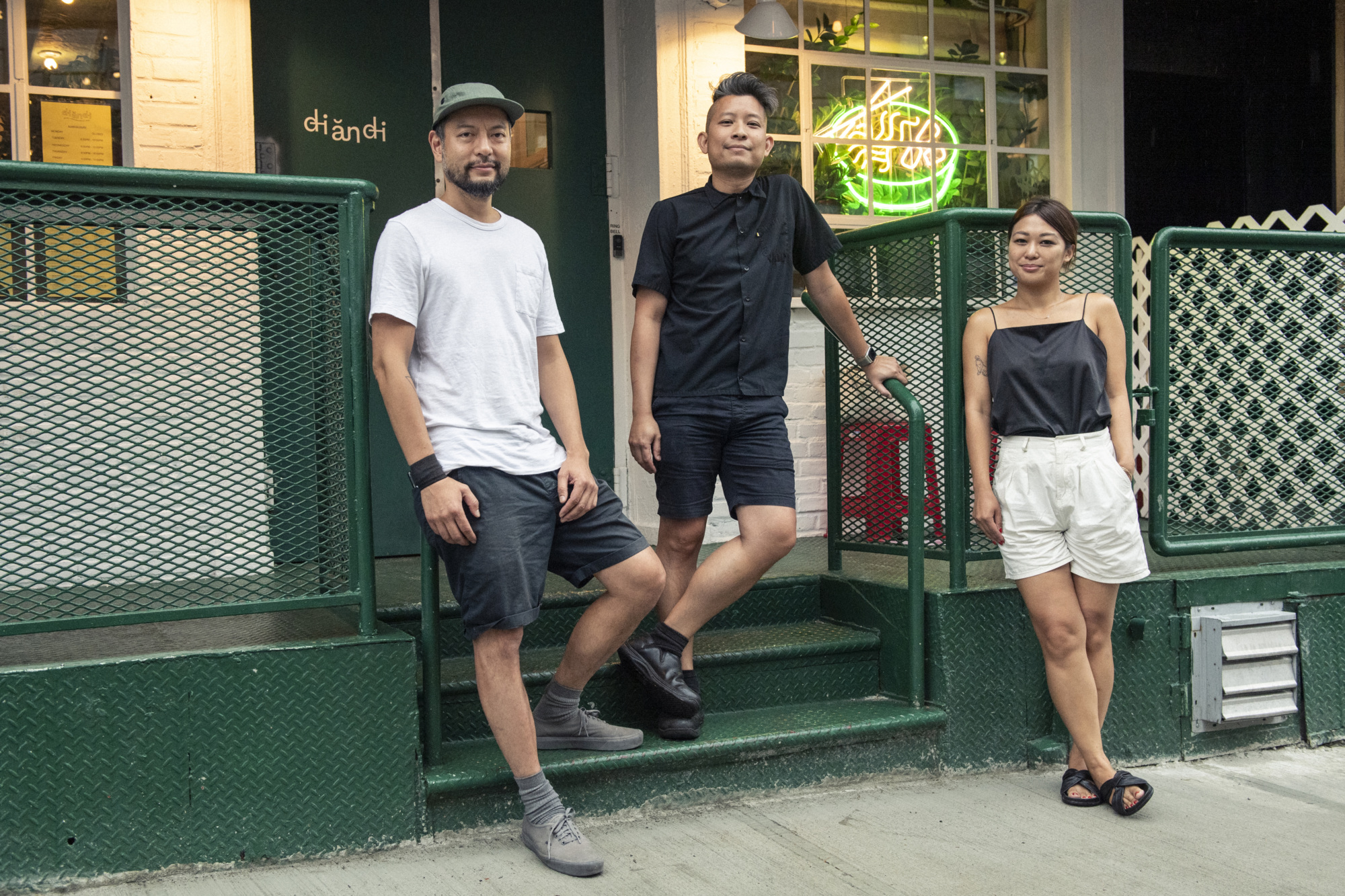
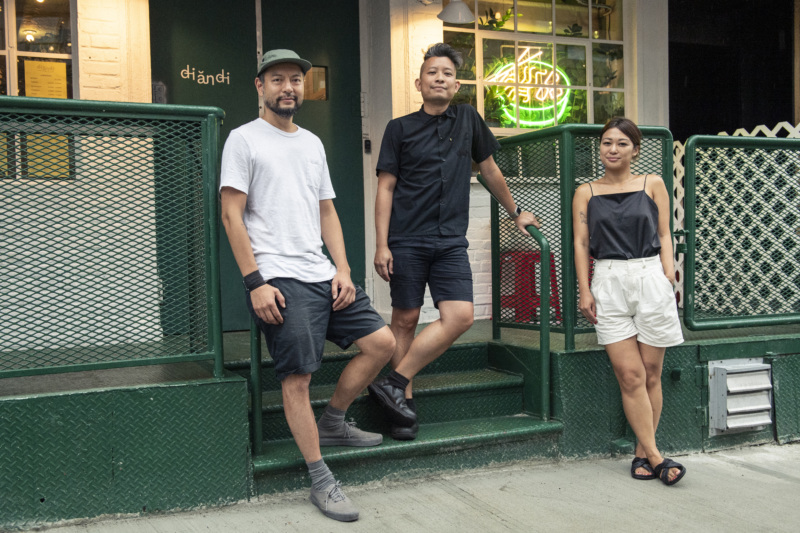
Though An Choi’s opening menu would seem basic by today’s standards, the restaurant was distinctive for its time. And what also helped the restaurant stand out was its embrace of the entire restaurant experience and its desire to set a scene that was more deeply connected to modern-day Vietnam — like the attention to detail paid to the wall treatments, the street cart by the front door, and the music playing in the background.
However, this new generation of Vietnamese restaurants in New York — An Choi included — arrived at least a decade, if not more, behind their counterparts in other major U.S. cities.
In the late 1970s, while operating out of a “secret kitchen” in a San Francisco deli called Than Long, Helene An invented her signature garlic noodles, a uniquely Vietnamese American dish of buttery, garlicky, umami-boosted strands of noodles. Later, in 1991, An and her family opened celeb-favorite Crustacean in San Francisco, expanding it to Beverly Hills in 1997. In 2019, the Smithsonian honored An as “the mother of fusion cuisine” who introduced mainstream America to Vietnamese cuisine. That same year, An debuted her latest restaurant concept (temporarily closed for now), called Dà Lat Rose, which offered a 12-course tasting menu inspired by her personal story. Today, she and her family operate six restaurants throughout California.
In 1995, Charles Phan opened his highly influential modern Vietnamese restaurant, The Slanted Door, in San Francisco’s Mission District, introducing San Franciscans to the joy of shaking beef — and also managing to charge ambitiously for it. Today, an order for his signature dish costs $43, and the restaurant has two locations, including one in the prominent Ferry Building.
Non-Vietnamese chefs in cities outside of New York were also opening restaurants that celebrated Vietnamese cuisine. In 2010, chef Jordan Kahn, now of Vespertine and Destroyer fame, opened Red Medicine in Los Angeles, initially serving modernist Vietnamese inspired dishes out of terrariums, and infusing his spring rolls with liquid lime gel. (Eventually, Red Medicine’s menu transitioned into neo-Nordic cuisine before it closed in 2014.) Los Angeles magazine restaurant critic Patrick Kuh wrote of Kahn, a year after the restaurant opened: “He’s not attempting to dumb down Vietnamese food; he pays his respects to the canon without trying to reinvent it or, for that matter, adhere to it. The effect can be transporting.”
By 2012, Chris Shepherd, a white chef from Nebraska, opened Underbelly in Houston. At Underbelly, Shepherd found ways to acknowledge and center the city’s immigrant restaurants and chefs, especially Vietnamese cooking traditions.
Back in New York, other pioneering Vietnamese restaurants that followed An Choi included Bep Ga (2009), a pho gà (chicken pho) specialist, and Bun-Ker, now known as Bunker (2013). By 2017, the city also had pho specialists like Hanoi House and Madame Vo. Each of these places set themselves apart from more established New York City Vietnamese restaurants through the types of dishes they served, and the ambience they set.
Bep Ga, which closed last year, stood out on Chinatown’s Forsyth Street with its ballerina pink walls and more contemporary décor, as well as its once elusive pho gà. Bunker, temporarily closed for the moment but reopening soon, resembles a punk rock skateboarder’s vision of a tropical bar and restaurant — because it is — and hosts DJs and rock bands on occasion.
And most of these newer kitchens were helmed by second-generation Americans (or in Bep Ga’s case, a Vietnamese French immigrant to New York), who grew up outside of New York, often in Vietnamese American enclaves.
At Hanoi House, the opening chef, John Nguyen, who was born in Vietnam but grew up in Orange County, Calif., eschewed the standard plate of bean sprouts, lime slices, and Thai basil in favor of a tiny bowl of slivered, pickled garlic for his pho bac.
Yen Vo, the namesake for Madame Vo and chef-owner Jimmy Ly’s wife, grew up in Long Beach, Miss., on the Gulf Coast. Ly, a Queens native, grew up in the city, and worked at his parents’ Chinatown bánh mì shop, Paris Sandwich. The menu at Madame Vo reflects both of their family traditions, like the addition of a short rib to pho, something Vo’s family would do. The top-secret recipe for the avocado sauce that comes with the restaurant’s fried soft-shell crab, cua lot rang muoi, comes from Ly’s mother.
In 2018, Bui and his partner, Kim Hoang, teamed up once more with Dennis Ngo to open Di An Di in Brooklyn’s Greenpoint neighborhood. Initially, they wanted to showcase Vietnamese soups beyond pho, but the restaurant has since evolved into a Vietnamese American restaurant that reflects their shared backgrounds, as well as those of their team.
By the time An Choi closed last year, its menu had also changed. Eventually, Bui says, “We decided [the menus at both restaurants] will come from our own experiences, whether it’s eating our grandmother’s food, or coming from Houston’s Little Saigon or from Eden Center in Virginia, or our travels to Vietnam that gave us inspiration. And it’ll always evolve.”
▪️
Di An Di’s Hoang, actually, has a pithy way of explaining what’s taking place: “In New York,” she says, “we’re immigrants from our own hometowns.”
That is very much the explanation of how the Vietnamese food we’re eating in New York today has come to be. It is second-generation Vietnamese Americans who are bringing to the table, and kitchen, their experiences of living in other Vietnamese American communities outside of New York, and the result is a diversity of Vietnamese cuisine that New York has never seen before.
In other words, this new generation of Vietnamese American restaurant owners in New York is distinctly different from the first-generation immigrants who came before them. Their restaurants speak to their unique experiences as being both Vietnamese and American. They are extensions of themselves, and their identities.
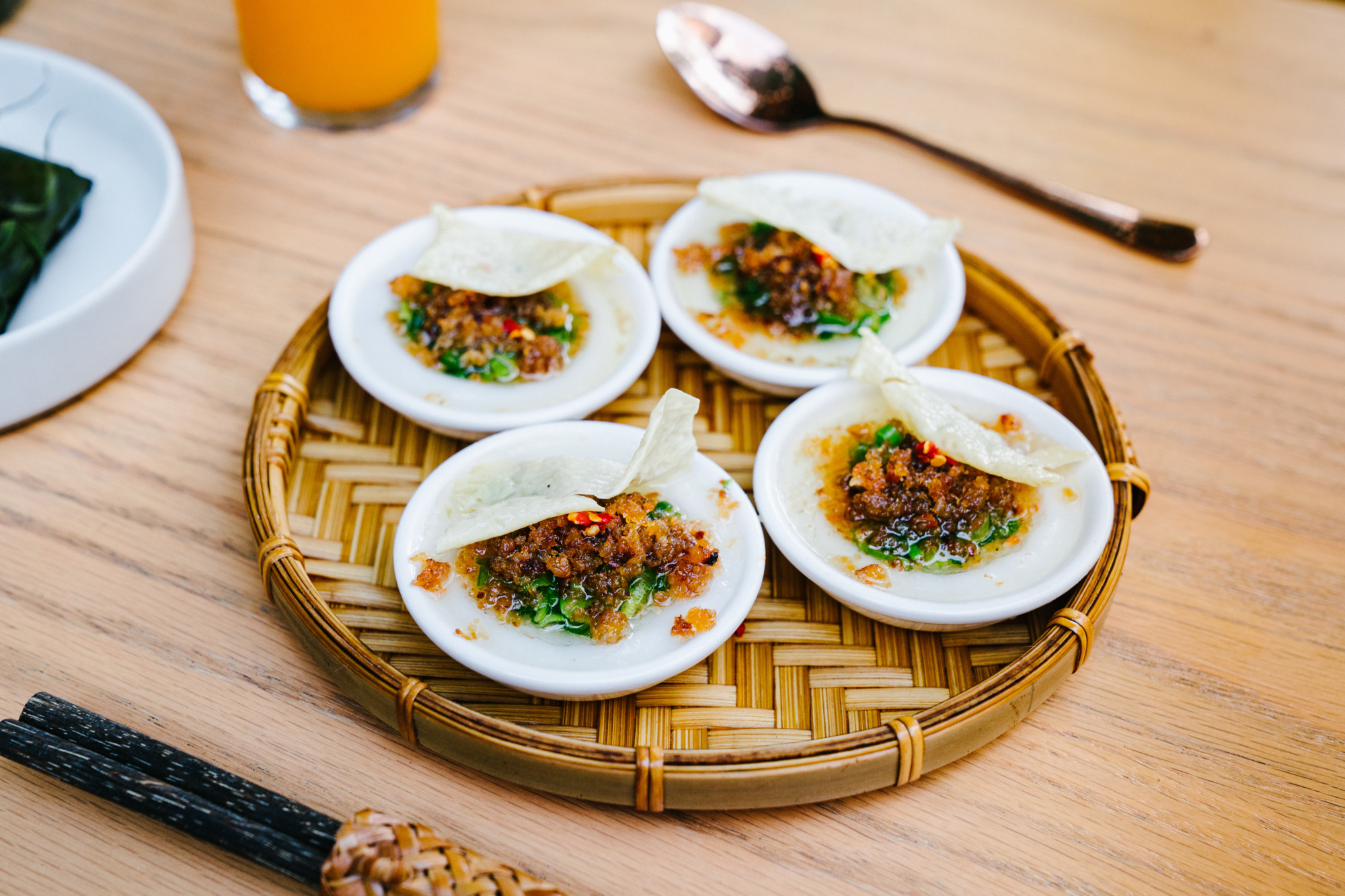
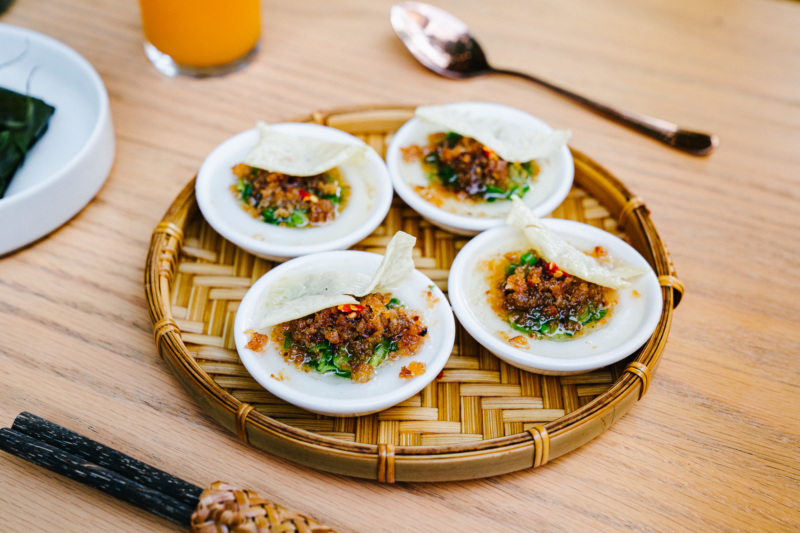
You see this most clearly in the dishes served at places like Vo and Ly’s Madame Vo BBQ (temporarily closed), where they focus on bò 7 món, a seven-course feast of beef that you’d be hard-pressed to find elsewhere in New York. Nearby, at Ngo’s Van Da, you can find bánh bèo (pictured above), discs of steamed rice cakes, and bánh it ram, that are ubiquitous elsewhere in the country, but not in New York. At Bánh on the Upper West Side, which opened in 2020, diners line up in droves to try their fried sticky rice cakes, bánh chung chiên, or steamed rice rolls, bánh cuon hà noi, both of which were hard to find in New York before.
Ha’s Dac Biet’s Anthony Ha and Sadie Mae Burns both grew up in the tri-state area, but when you ask them what influences their cooking, they’ll tell you it’s their trips to Vietnam and Southern California. “Our food makes people feel nostalgic, or it reminds them of what they can find out in California,” Burns says. “That’s a void that I think is still looking to be filled here.” Some of their signature dishes include pâté chaud, a flaky, savory meat pastry; grilled oysters with scallions and peanuts; and a signature herb salad with rau ram, basil, and whatever seasonal market vegetables are available, laced with fish sauce, lime, and crispy fried shallots.
This July, the day after New York Times’ restaurant critic Pete Wells declared Ha’s Dac Biet’s residency (with Kreung Cambodia) in East Williamsburg “the restaurant of the summer,” the chefs left their residency, alluding to disagreements with management. But by the very next week, they had a new pop-up location, and New Yorkers, many of whom follow Ha’s Dac Biet on social media, were again lining up to feast on their periwinkle snails cooked in coconut milk, lime leaf, and chile.
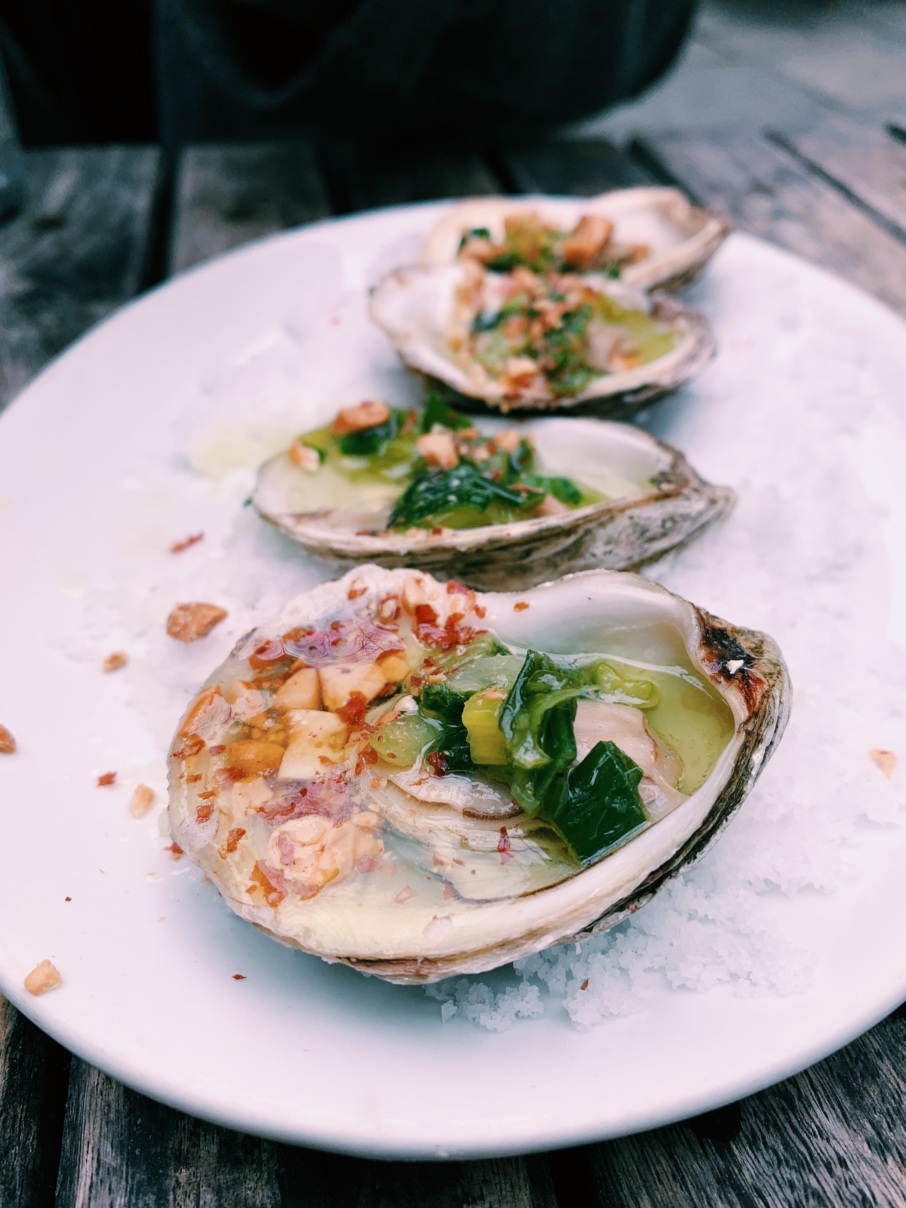
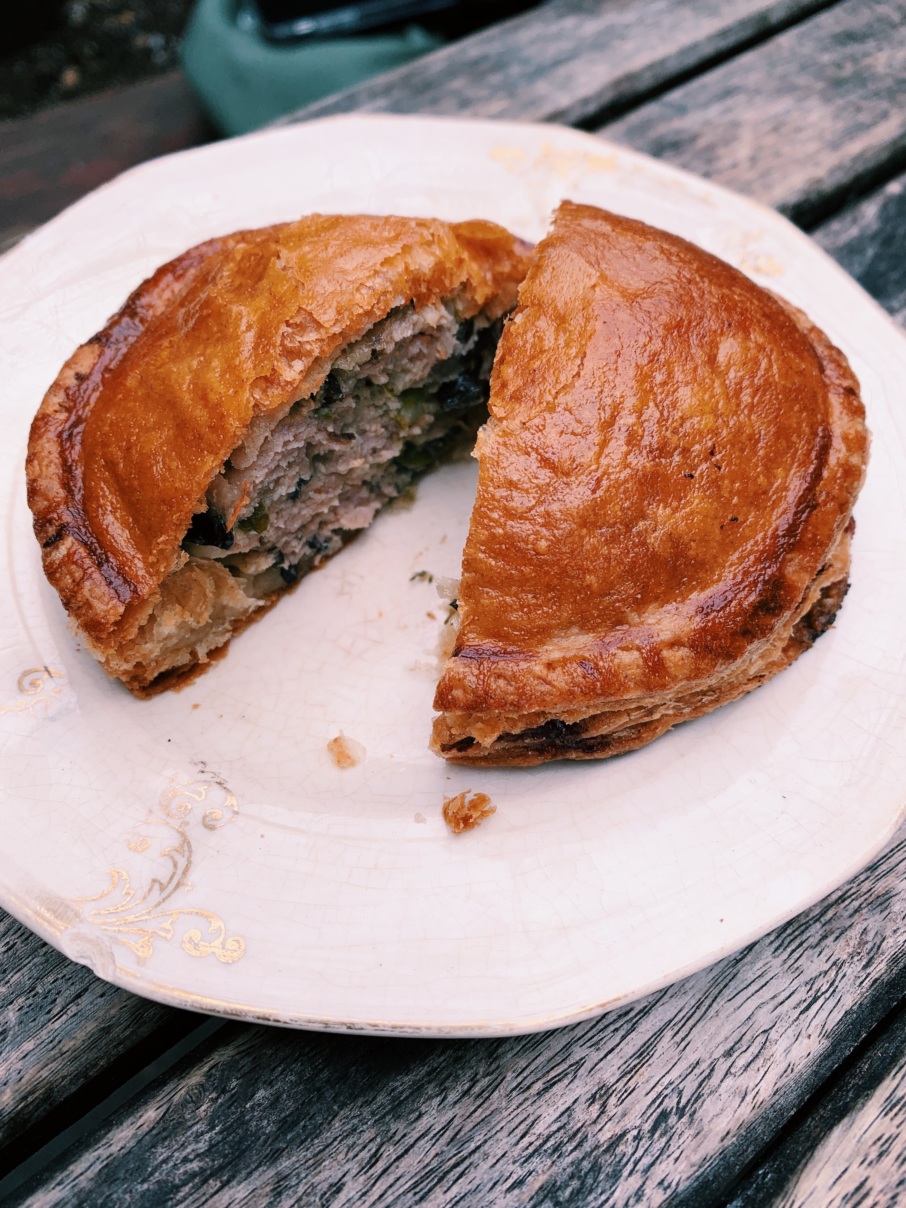
What’s also set this new guard of Vietnamese restaurants and chefs apart from the old guard is that they’ve been able to harness the power of social media — and, unlike with first-generation proprietors in the past, there simply aren’t as many language barriers between them and their diners. Limited English Proficiency (LEP) rates, defined as anyone over the age of five who does not speak English “very well,” were relatively high (60%) for New York’s Vietnamese population in 2019, according to the Asian American Federation’s Census Information Center.
“If you go into a mom-and-pop Vietnamese restaurant and you don’t speak the language, it’s really hard to build a connection and relationship with them,” explains Helen Nguyen, chef and owner of Saigon Social. “But when you go to Di An Di and you meet Tuan, Kim, and Dennis, they not only speak your language but they’re also in the same age range — there are just more commonalities.”
Nguyen also credits social media for popularizing Vietnamese cuisine, especially newer restaurants like hers, and pop-ups like Ha’s Dac Biet. Since opening Saigon Social in 2020 on the Lower East Side, she’s gained a following for her Bánh Mì Burger with an oxtail Maggi gravy, and her Vietnamese noodle soups like bún riêu and bún bò Hue.
And many of these second-generation chefs have also worked in high-profile kitchens. Nguyen, a Seattle native, previously worked for Daniel Boulud and L’Appart. Ha and Burns met one another at Mission Chinese Food, and were most recently cooking at Frenchette and Roman’s, respectively. Bolero’s Matt Le-Khac and Falansai’s Eric Tran both cooked at Blue Hill at Stone Barns. These experiences often make their way into their cooking techniques, or ways they source precisely what they need for their dishes. At Bolero, for example, Le-Khac uses fresh herbs and produce grown on his father’s farm in Pennsylvania.
We’re also starting to see more regional specialties and Vietnamese bakeries emerge in the city. Most recently, Doris Ho-Kane opened the city’s first Vietnamese American bakery, Ban Be, in Carroll Gardens, with months-long waitlists for her cookie tins. Lauren Tran, a former Gramercy Tavern pastry chef, is seeing success with her Vietnamese French pastry pop-up, Bánh by Lauren. And although it’s now closed, Trung Nguyen’s Just Pho in Midtown excelled at serving very specific types of Northern-style pho when it was in operation.
There’s also been a noticeable shift in what diners want to eat today, whether because they’re more traveled or are simply more open to eating — and understanding — cuisines that might be new or less familiar to them. And Vietnamese Americans, too, are beginning to embrace these chef’s personal takes on the foods they grew up with, instead of comparing them to their grandmother’s versions.
Says Burns, “You don’t have to follow any one set of rules any longer. You can forge your own path.”
Last fall, I was one of many people gathered outside Bep Ga on a Saturday, eager to devour woven platters of bún dau mam tôm, a Hanoi specialty from Jerald and Nhung Dao Head’s pop-up, Mắm. Jerald cooked at An Choi and at Di An Di and, after a break, he’s now returned to Di An Di as its chef de cuisine. The bún dau mam tôm, which includes a platter of pork intestines, blood sausage, tofu, and rice vermicelli, was one of my favorite meals I had all year. My only critique? I wished I had been given more of the mam tôm, a notoriously pungent shrimp paste, to dip everything into. And I’m sure I wasn’t the only one who felt that way.
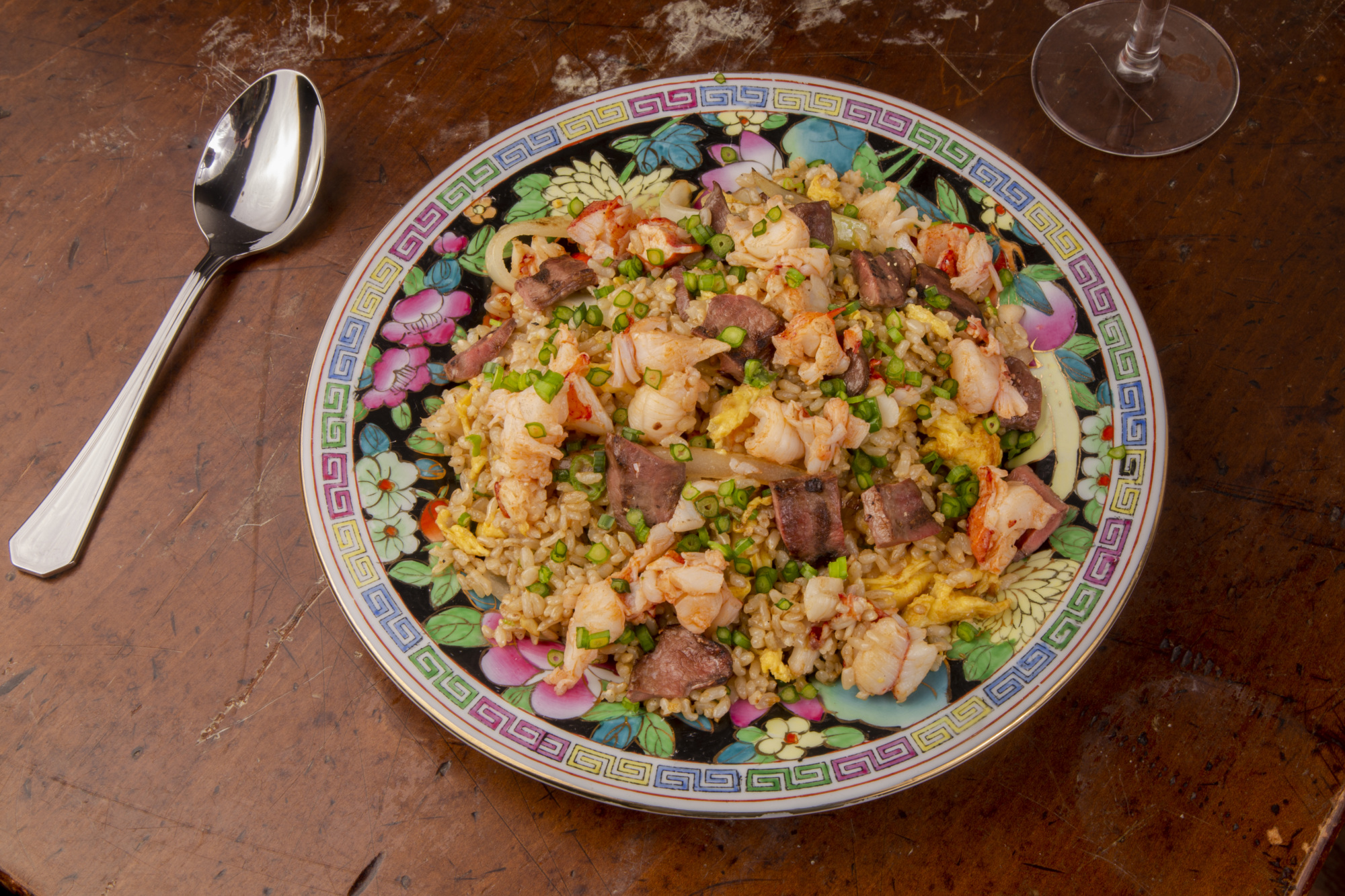
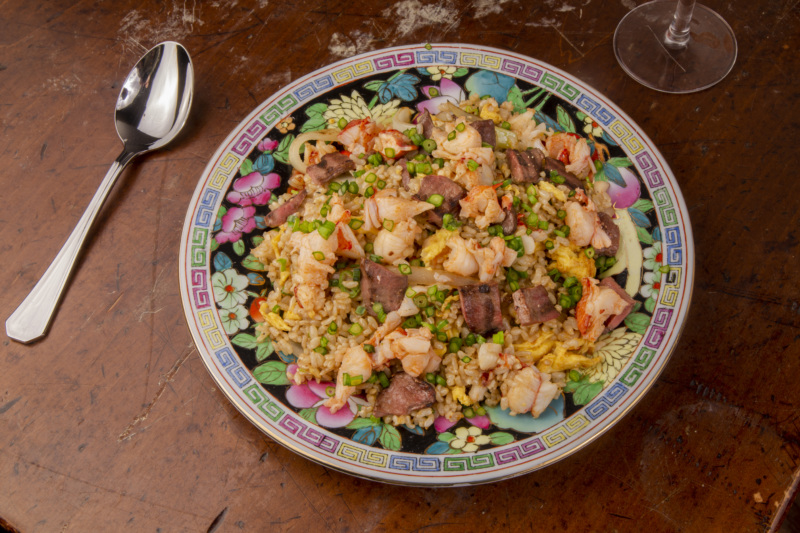
And on a rainy summer night in July, nearly every table I saw at Falansai in Bushwick, Brooklyn had ordered the confit duck necks and housemade cha lua. There, chef-owner Eric Tran, a Chicagoland native, pays homage to his Vietnamese father with his Dad’s Egg Rolls and Dad’s Fried Rice, though he uses brown rice instead of the traditional white. In a nod to his mother’s Mexican heritage, he adds guacamole to a delicate tilefish tartare with makrut limes and cashew ice. A salsa verde with pickled pineapples accompanies the grilled Berkshire pork shoulder that’s marinated in honey and fish sauce.
Some might describe what Tran is doing as “fusion” food, and it is, in the best possible way. It’s food that’s delicious but also, it’s a dining experience that makes you reconsider what defines Vietnamese food, or American food, for that matter.
And that’s exactly what this new second generation of Vietnamese American restaurants and chefs is doing in New York today. They’re creating a Vietnamese American cuisine all their own — one that sets New York apart.
Deanna Ting is a Resy staff writer. Follow her on Instagram and Twitter. Follow @Resy, too
More From Resy
Related Stories

-
The Resy Guide to Vietnamese American Food in New York
New York City has never had a reputation for its Vietnamese cuisine. But that’s beginning to change. -
Turns Out Now Is the Golden Era for Fusion Cuisine
In this edition of Taste Matters, recurring Resy columnist Mahira Rivers delves into a borderless style of cooking, rooted in the multitudes that make people interesting. -
Eating Between the Lines With Brooklyn’s Di An Di
What secrets lie beneath the surface of a restaurant’s menu? Here, the team behind Greenpoint’s Di An Di uncovers the stories of their latest prix-fixe, a fish barbecue menu. -
Xin Chao’s Homage to Vietnamese Home Cooking, As Seen Through Five Dishes
In this edition of Dish by Dish, chef-owner Christine Ha breaks down five dishes from Xin Chào’s menu. -
Because This Is What Community Looks Like
Welcome to Resy’s Community Series, a celebration of the people and places that make our communities special, told through their own voices and perspectives. -
Playing with Vietnamese Culinary Conventions at New York’s Monsieur Vo, in Five Dishes
How Monsieur Vo is all about the foods you want to eat when you’re drinking — known in Vietnamese as ăn nhậu — and simply having a good time.

